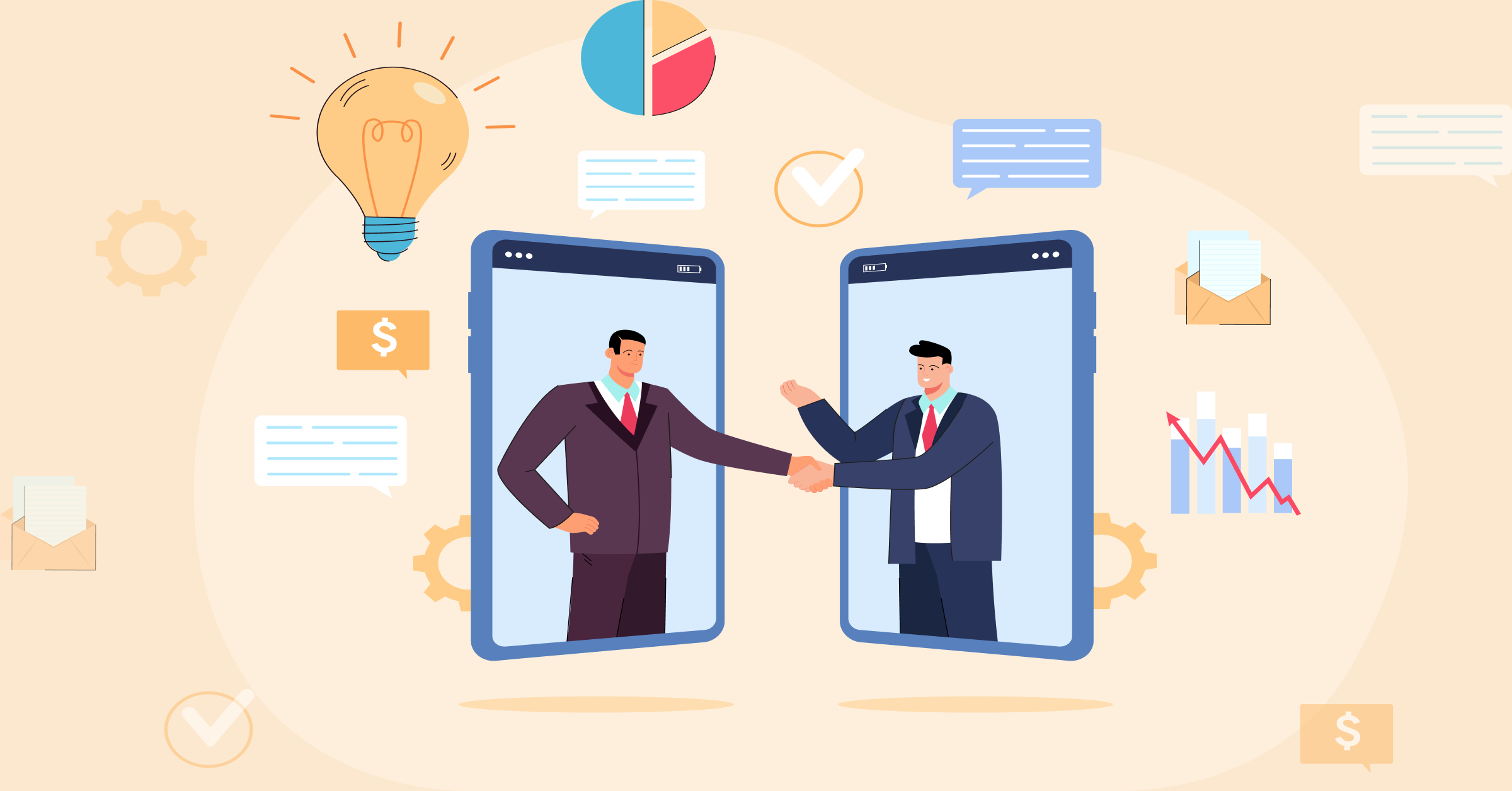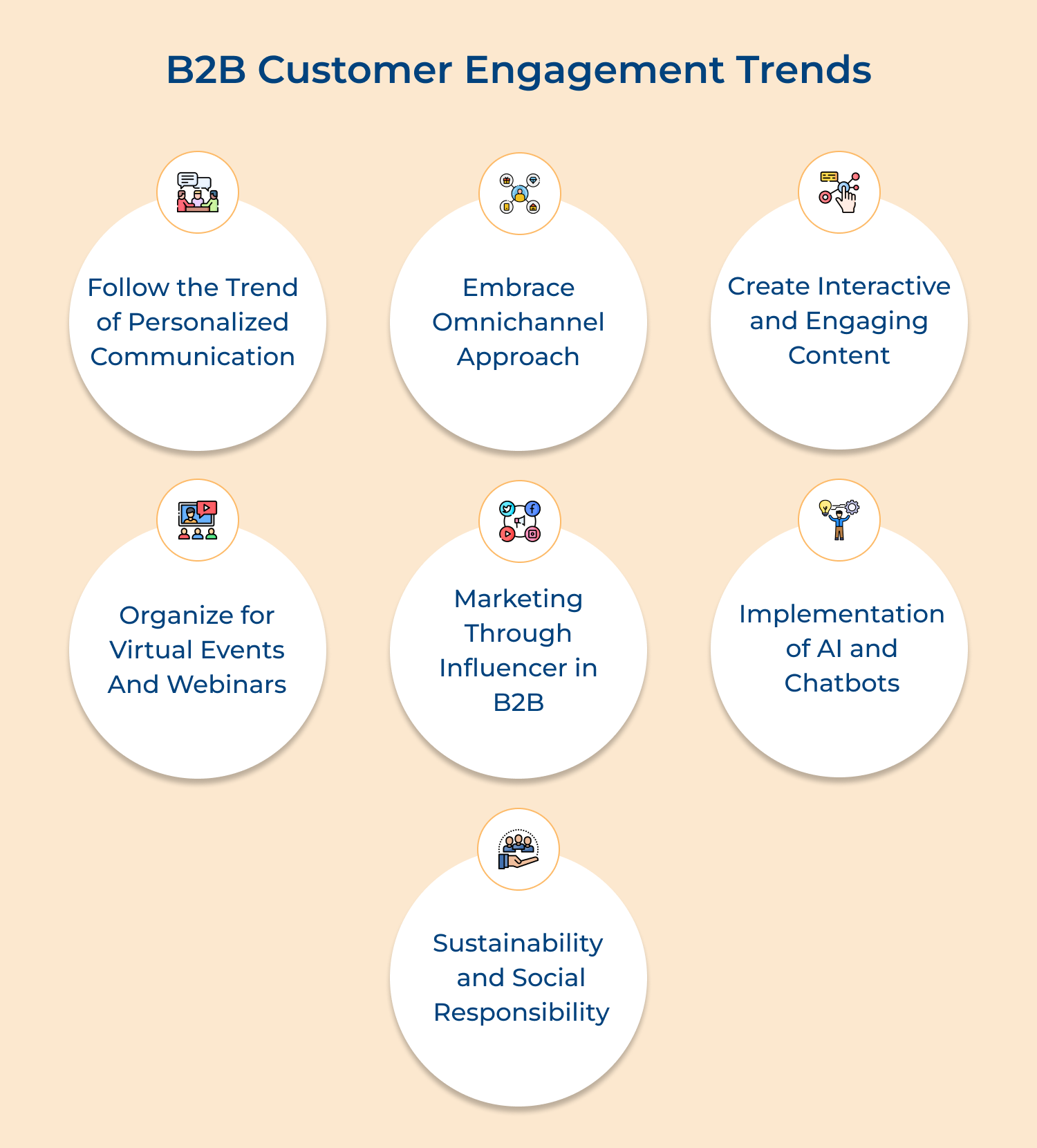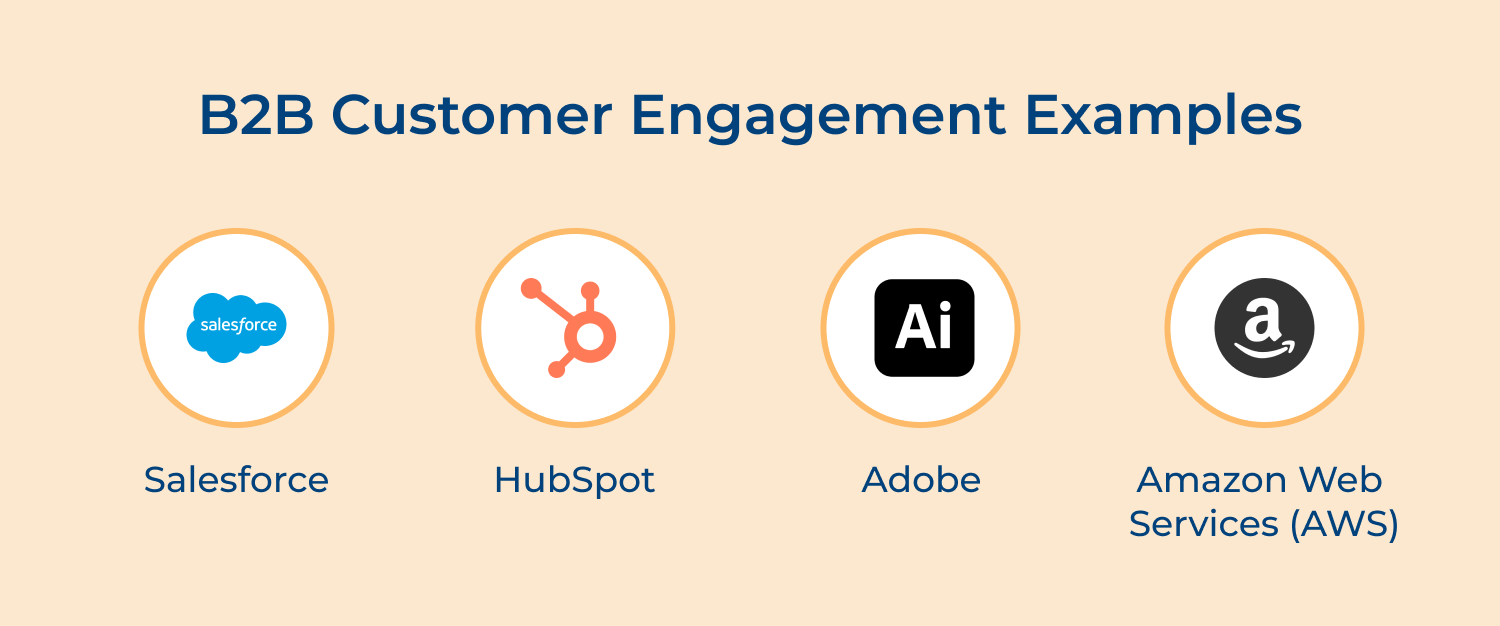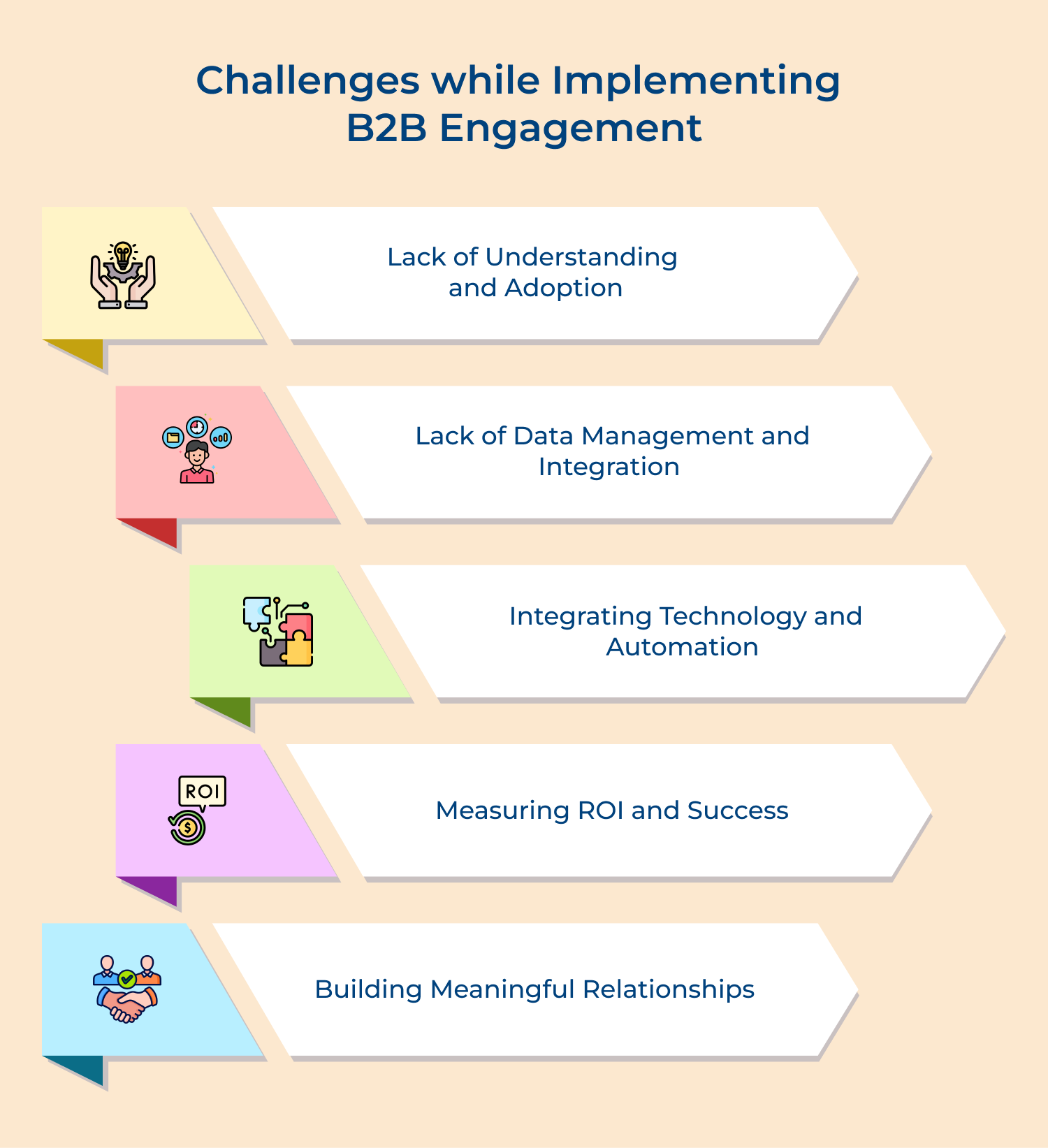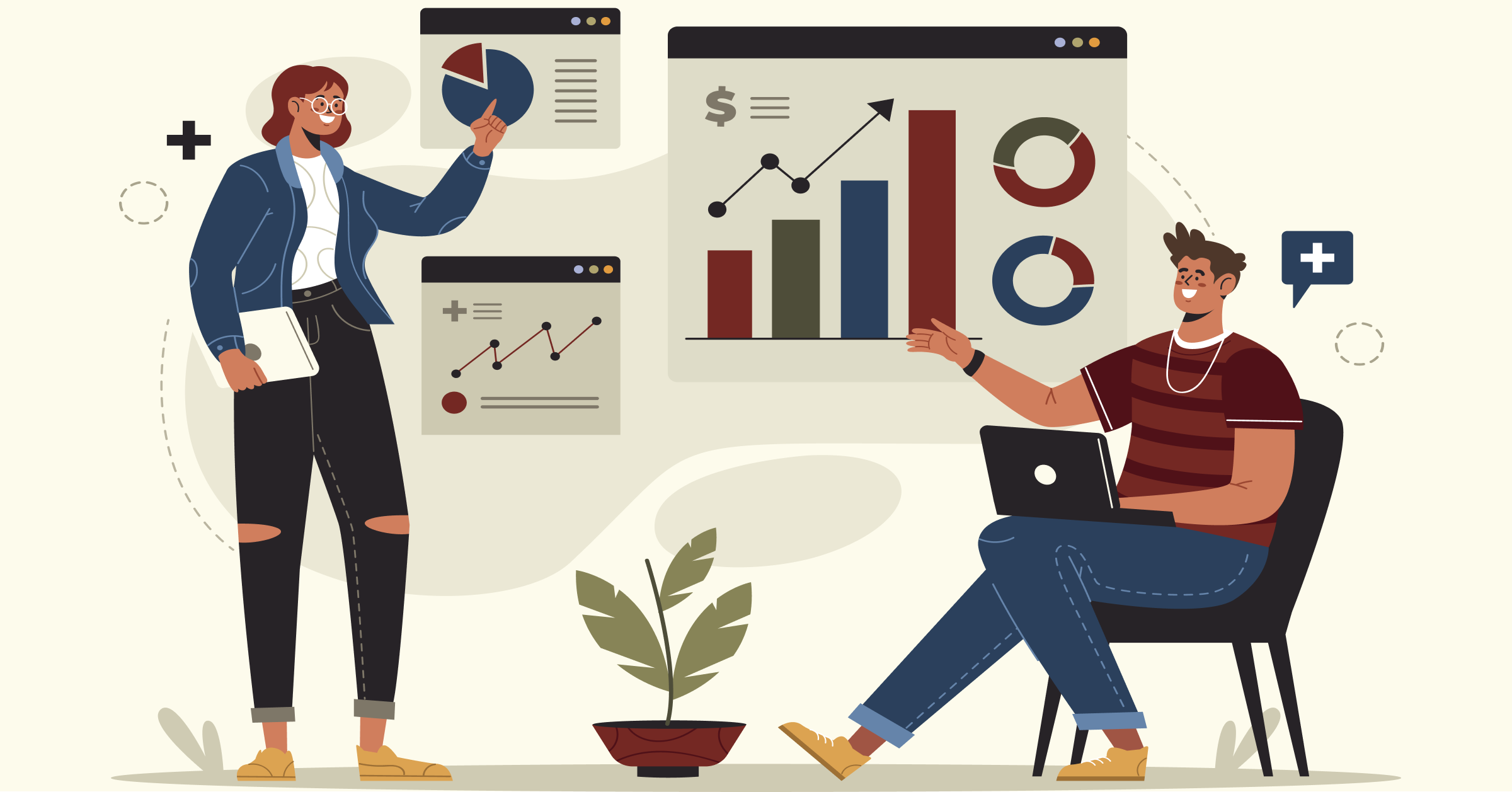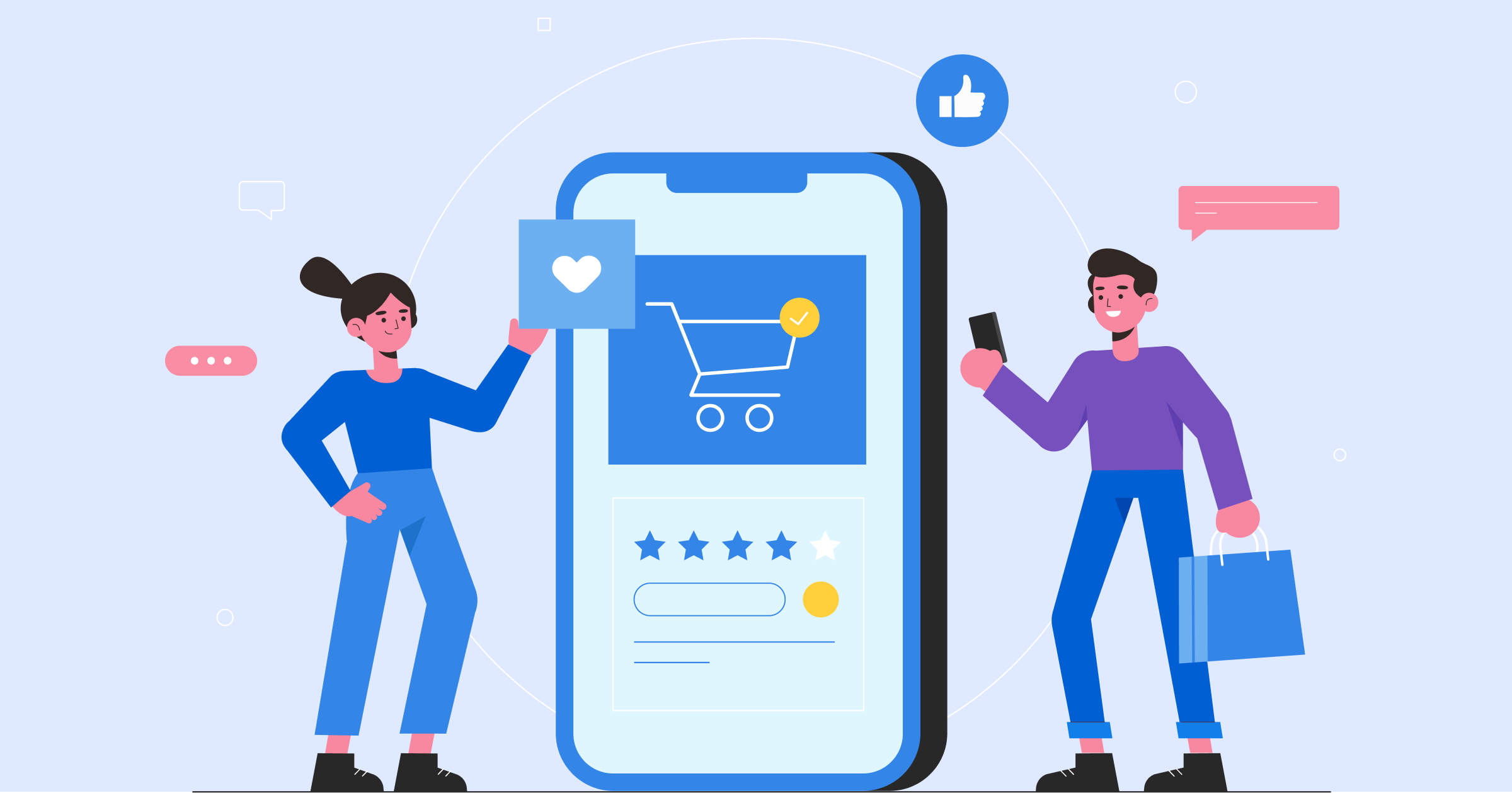Here are seven strategies that you can implement to enhance your B2B customer engagement:
1. Develop A Customer-Centric Mindset
Adopting a customer-centric approach to build trust and establish long-lasting relationships with your B2B customers.
Developing a customer-centric mindset is crucial in strategies to improve B2B customer engagement because it allows businesses to truly understand and meet the needs of their customers. Businesses can build stronger relationships, increase customer satisfaction, and drive business growth by putting customers at the center of every decision.
One example of a customer-centric mindset in B2B customer engagement is seen in the success of Amazon Business. Amazon Business focuses on providing a seamless experience for its B2B customers, offering features like bulk ordering, customized pricing, and detailed product information. Amazon Business has been able to build a loyal customer base and generate significant revenue by understanding the unique needs of businesses.
Here are three best practices to develop a customer-centric mindset and improve B2B customer engagement,:
- Customer research and segmentation: They have to understand different segments within the customer base and tailor their strategies to meet their specific needs.
- Personalization and customization: Implement personalized marketing and sales approaches that speak directly to individual customers. Providing a personalized experience shows customers that you value their unique requirements and preferences.
- Continuous communication and feedback: Amazon established open lines of communication with customers and proactively sought their feedback. Actively implementing customer feedback demonstrates your commitment to their satisfaction and helps you identify areas for improvement.
2. Personalize Your Communications
While talking about B2B customer engagement, personalization holds immense importance. It enables businesses to establish a deeper connection with their clients, foster trust and enhance overall customer satisfaction.
Companies can create a more meaningful and relevant customer experience by tailoring communications to address individual needs or preferences.
For eg – A B2B company that provides solutions for various industries. Instead of sending generic emails, the company could personalize its communications by understanding each customer’s specific pain points and addressing them directly. It would demonstrate a deeper understanding of their customers’ challenges and offer tailored solutions by following personalization.
Businesses should follow these two best practices to effectively personalize communications in B2B customer engagement:
- Utilize data and analytics: Leverage data and analytics to gather insights about your customers. The data-driven approach allows for more effective communication that resonates with your audience.
- Automation with a personal touch: While automation can help streamline communication processes, it is essential to balance it with a personal touch. Utilize automation tools to efficiently deliver personalized messages at scale, ensuring timely and relevant communication.
3. Utilize Multiple Communication Channels
Different B2B customers have different preferences when it comes to communication channels. Some may prefer email, while others may prefer phone calls or face-to-face meetings.
It is imperative to utilize multiple communication channels to effectively connect with your target audience. You can not only increase the reach and accessibility of your message but also provide your customers with options that cater to their individual preferences, leading to stronger engagement and overall satisfaction.
An example that demonstrates the importance of utilizing multiple communication channels is the company recognizing the need to connect with their B2B clients through various channels and tailoring their approach accordingly. As a result, they experienced a significant increase in customer engagement and a boost in sales.
Using multiple communication channels effectively in B2B customer engagement strategies, there are three best practices to consider:
- Comprehensive audience analysis: Conduct an in-depth analysis of your target audience to understand their preferences, behaviors, and communication habits. You can tailor your messages accordingly and ensure maximum engagement by gaining insights into their preferred channels.
- Seamless omni-channel integration: Integrate your various communication channels to create a seamless and consistent experience for your customers. It means ensuring that the messages across different channels complement and reinforce each other conveying a unified brand voice.
- Personalization and customization: Tailor your communication for each customer to enhance engagement. Send personalized messages through different channels making your customers feel valued and understood.
4. Offer Valuable Content
Create and share high-quality content that adds value to your B2B customers. Position yourself as a thought leader to establish credibility and trust with your audience.
Providing relevant information helps to establish your credibility and builds trust. You can educate your audience, address their pain points, and position yourself as a trusted advisor by offering valuable content.
For example: HubSpot has an extensive library of resources including blog posts, ebooks, and templates, all aimed at providing valuable solutions for marketers. It attracts and engages a large audience, and positions itself as thought leaders in the industry by consistently offering valuable content.
To ensure your content is truly valuable, here are three best practices to follow:
- Understand your audience: Conducting thorough research and developing buyer personas can help you tailor your content to resonate with your audience.
- Provide actionable insights: Valuable content should provide practical tips, actionable insights, and solutions. Your audience will see the immediate value and be more likely to engage and share your content with others by offering tangible takeaways.
- Keep it relevant and timely: Stay up-to-date with industry trends, news, and current events. Demonstrate that you understand your audience’s challenges and can provide valuable solutions in real-time by creating content timely.
5. Provide Exceptional Customer Support
Invest in providing outstanding customer support to your B2B customers. An efficient customer support system can go a long way in building trust and loyalty.
Exceptional customer support is crucial in strategies to improve B2B customer engagement because it not only strengthens relationships with customers but also helps in building trust and loyalty.
Salesforce is a great example of the importance of exceptional customer support in B2B customer engagement. It is known for its outstanding customer support and personalized solutions to its customers. Their commitment to exceptional support has resulted in high customer satisfaction and retention rates, driving their success in the competitive software industry.
There are three best practices to consider for providing exceptional customer support in B2B customer engagement:
- Prompt and responsive communication: It is crucial to have a dedicated customer support team that can promptly address customer issues and provide timely updates.
- Personalized approach: Understanding individual customer requirements and offering personalized solutions can build strong relationships and enhance customer engagement.
- Proactive problem solving: Being proactive in addressing customer concerns can prevent future issues and demonstrate your commitment to their success.
6. Foster a Two-Way Dialogue
Create opportunities for your B2B customers to provide feedback and share their opinions.. When customers feel heard and valued, they are more likely to engage further with your brand.
Fostering a two-way dialogue is important because it allows businesses to connect with their customers on a deeper level, gain valuable feedback, and build stronger relationships. It enhances customer satisfaction but also increases customer loyalty and advocacy.
Apple is the best example of fostering a two-way dialogue in B2B customer engagement. It engages in conversations with its customers, listens to their needs and challenges, and makes improvements to its services based on the feedback received.
When it comes to best practices, there are three key strategies for fostering a two-way dialogue in B2B customer engagement:
- Actively solicit feedback from their customers through surveys, feedback forms, or customer advisory boards.
- Provide multiple channels for communication, such as email, phone, live chat and social media, so that customers can choose the method that suits them best.
- Act on the feedback received by making the necessary improvements and communicating those changes to their customers.
7. Build Relationships Through Networking
Leverage networking opportunities to build relationships with your B2B customers. Interactions can enhance engagement and provide a platform for deeper conversations.
Businesses can enhance their credibility, gain valuable insights, and open doors to new opportunities by establishing strong connections with other professionals. Networking allows companies to forge meaningful relationships, leading to long-term partnerships and increased customer loyalty.
Follow the three best practices to effectively build relationships through networking in B2B customer engagement:
- Be proactive: Actively participate in conversations, join relevant online communities, and engage in meaningful discussions. You can create a strong network of connections that can benefit your business by being proactive,
- Provide value: You establish yourself as a valuable resource and someone worth collaborating with by providing value to others. This reciprocity strengthens relationships and enhances B2B customer engagement.
- Maintain relationships: Stay in touch with your network through regular communication, whether it be through emails, phone calls, or social media. Consistently nurturing relationships, can solidify connections and ensure long-term engagement.
B2B Customer Engagement Trends
Customer engagement has become a crucial factor for success In the world of B2B marketing. Businesses must adapt and find new ways to engage with their customers.
